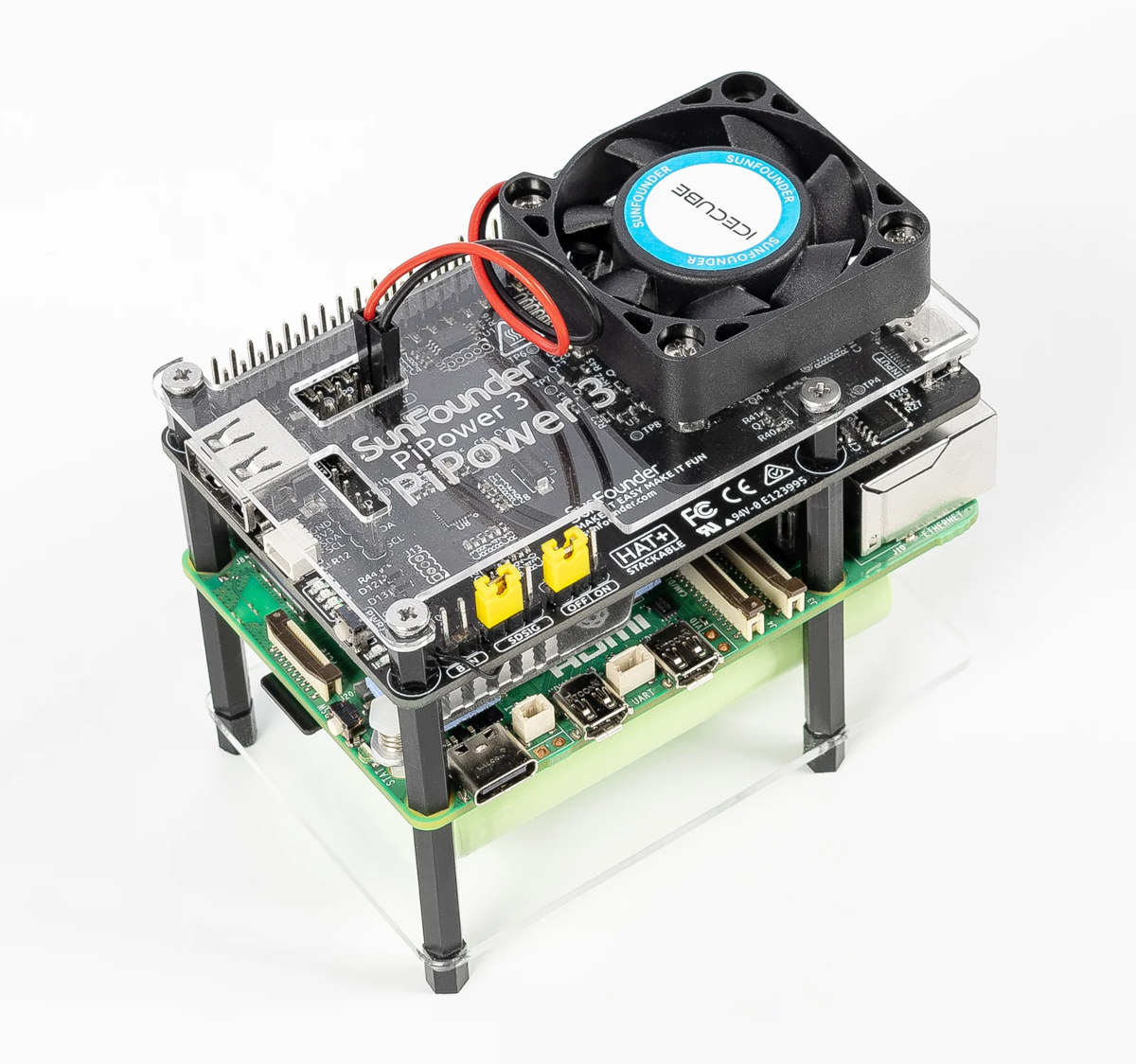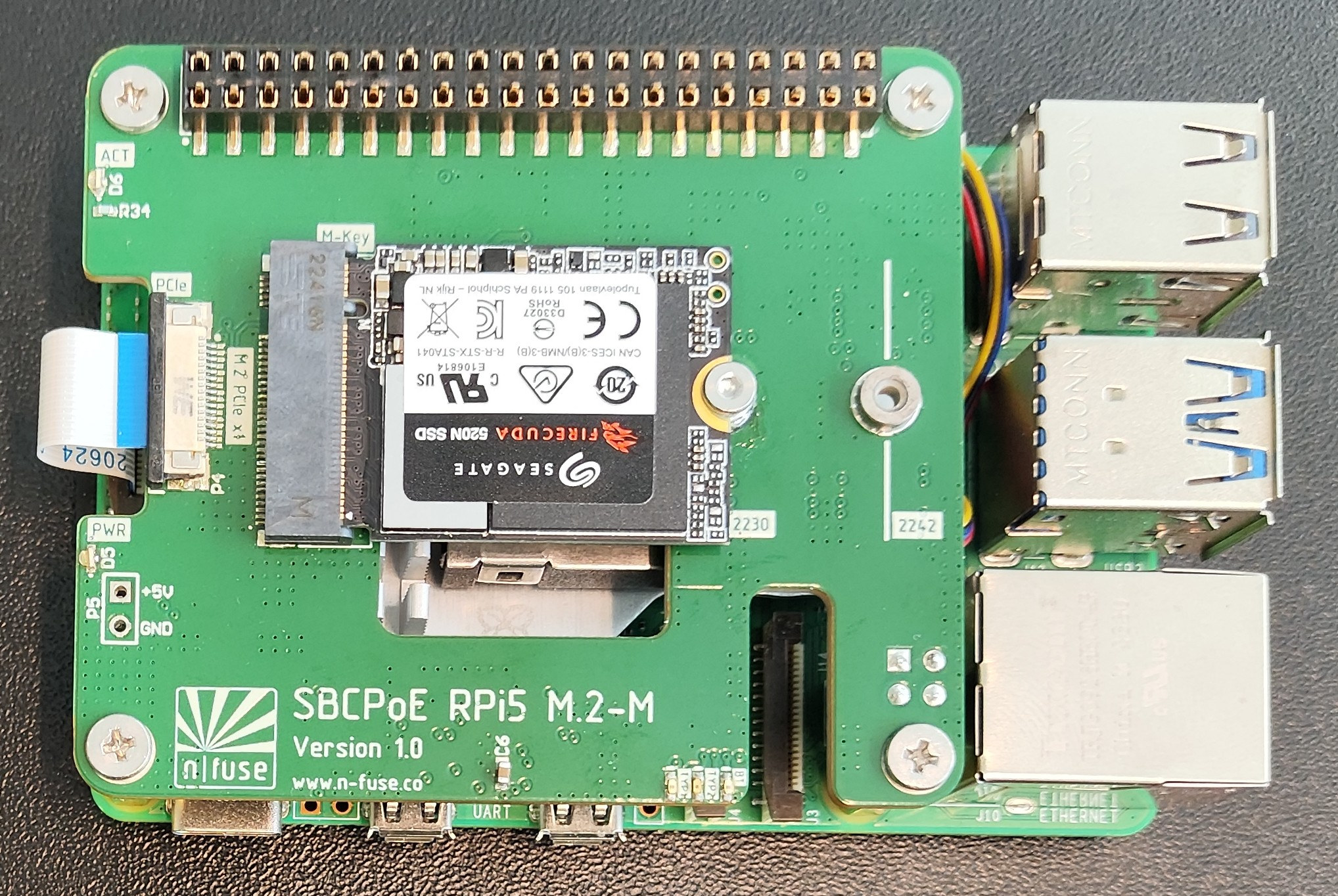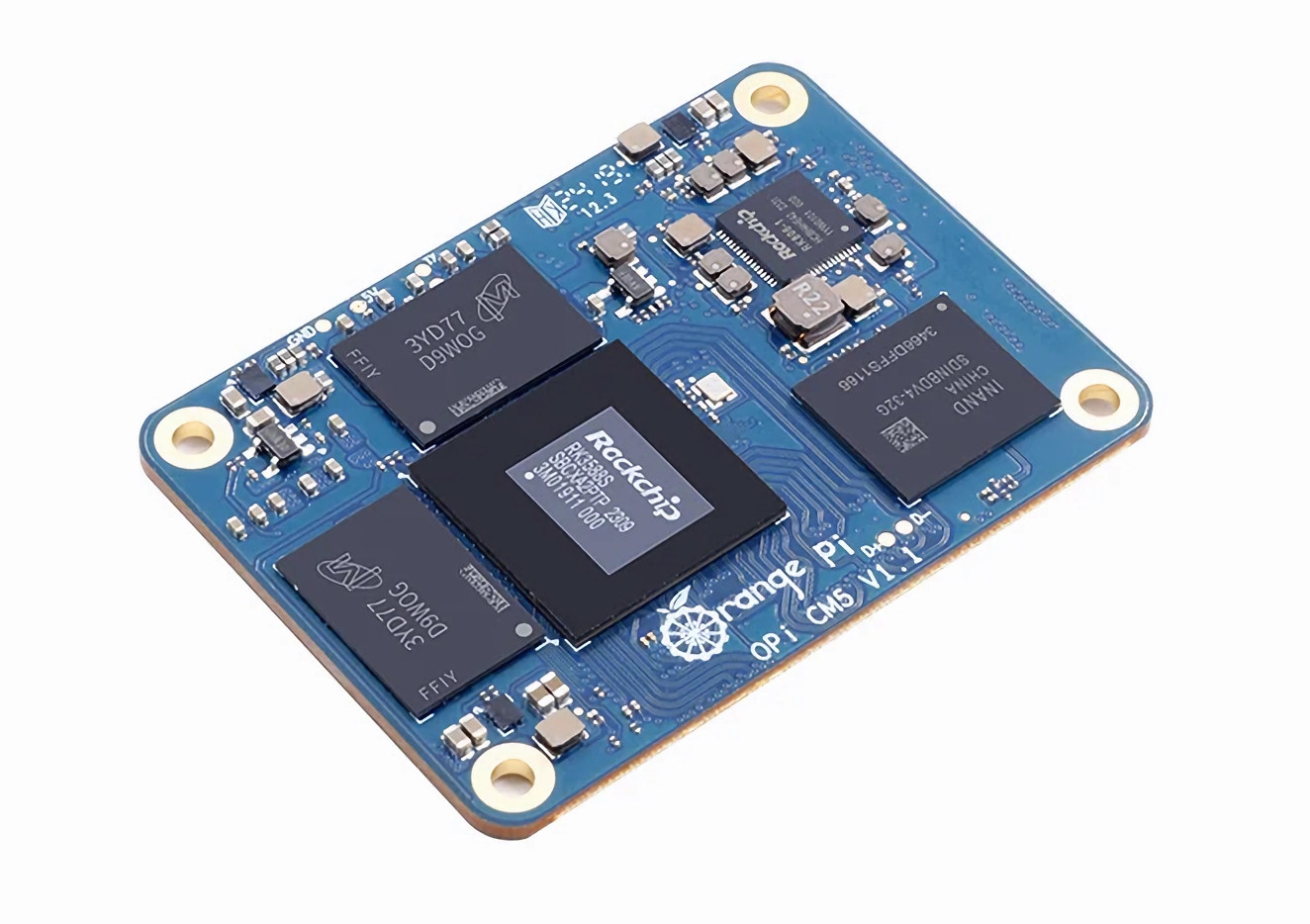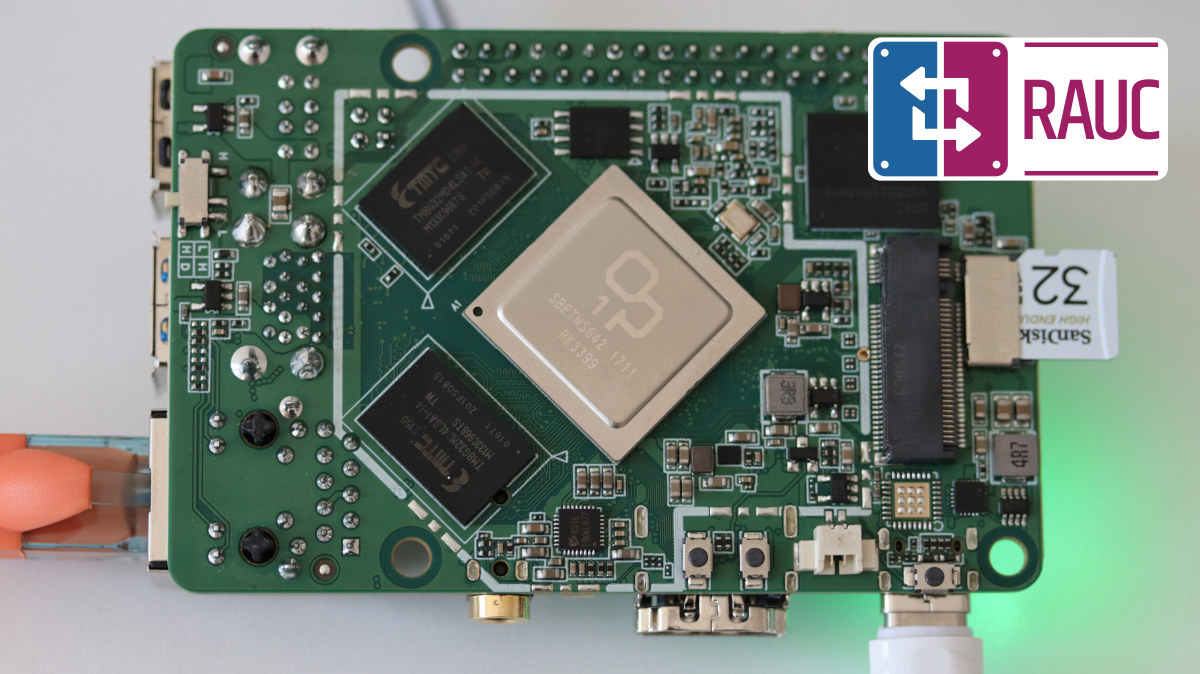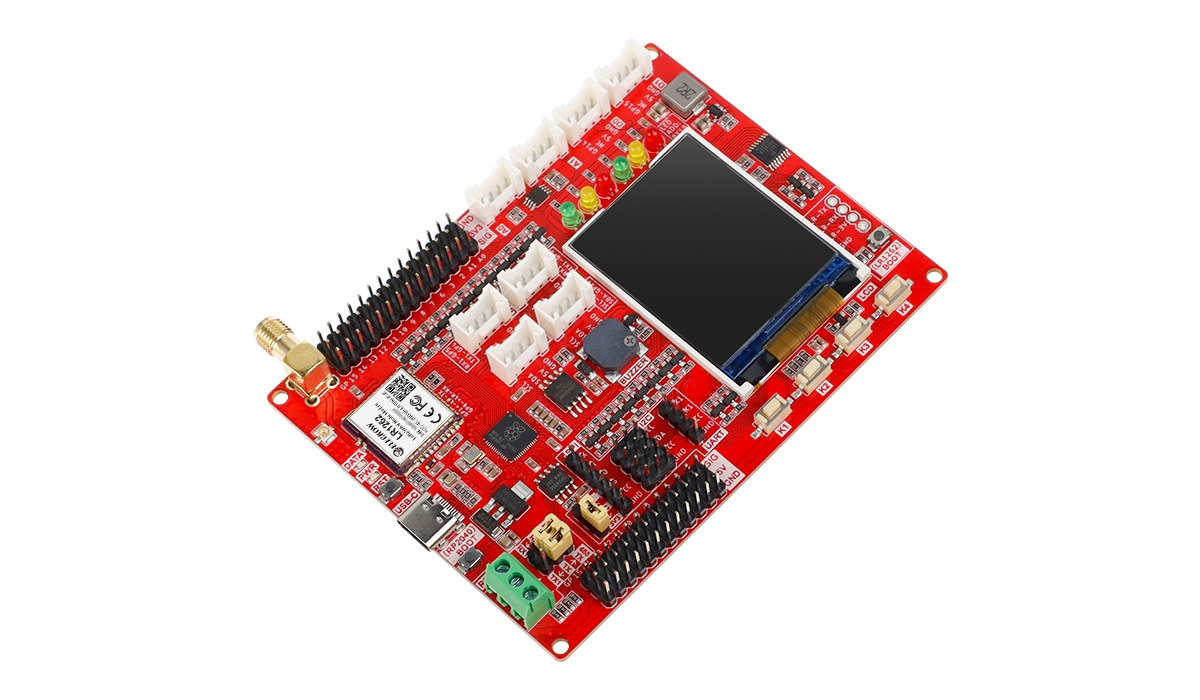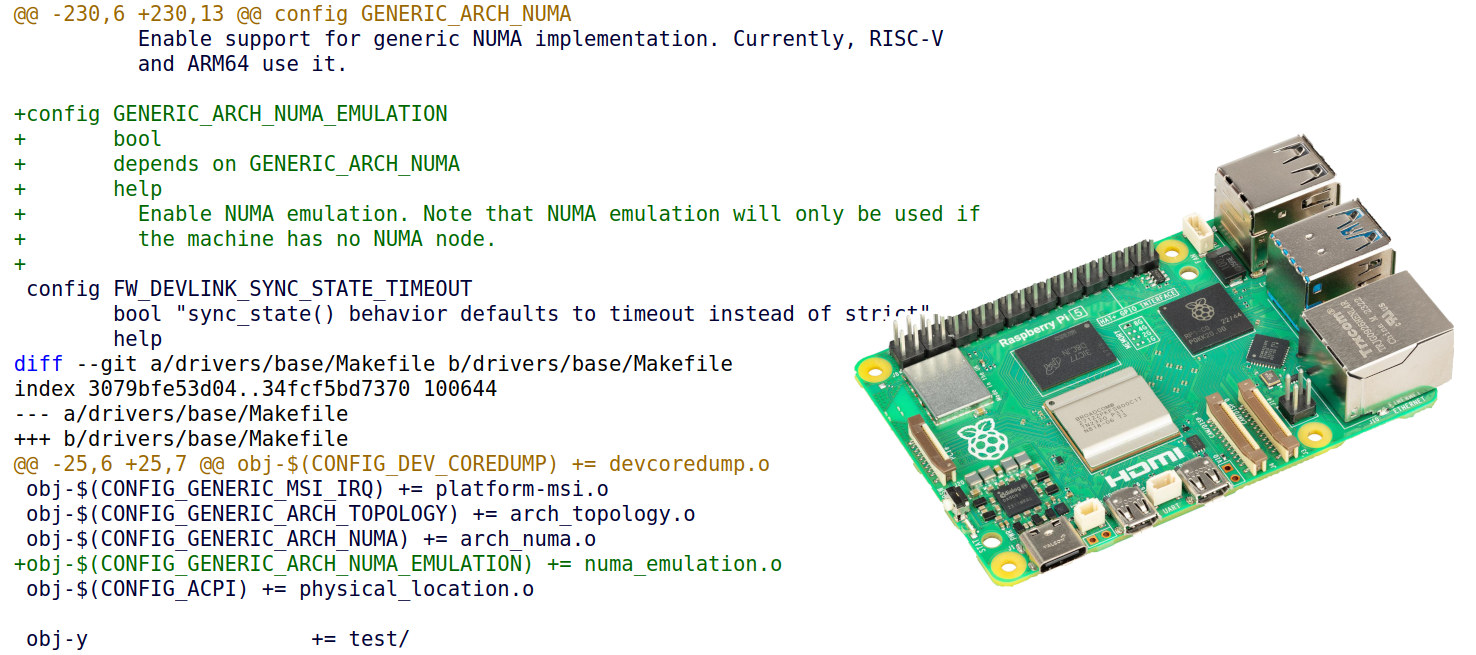SunFounder PiPower 3 kit is a UPS solution designed to work with the Raspberry Pi 5, other Arm SBCs, or even MCU boards like Arduino UNO and Raspberry Pi Pico. The board delivers a stable 5V/5A output, and a 32-bit CH32V003 RISC-V microcontroller takes care of power management and battery level reporting to make sure the Raspberry Pi 5 keeps running when a power failure occurs and shutdowns gracefully when the battery level is low. The kit comes with two 18650 2,000mAh batteries that connect through a 2-pin connector, and all accessories – standoffs, acrylic case, and fan – for assembly with the Raspberry Pi 5, or other compatible boards like the Pi 4, Banana Pi BPI-M5, Radxa Rock Pi E, Orange Pi 3B, and others. PiPower 3 kit specifications: 32-bit CH32V003 RISC-V microcontroller supporting I2C communication Input – 5V/5A via USB Type-C with PD support Output – 5V/5A […]
N-Fuse PoE HAT for the Raspberry Pi 5 also includes mini PCIe or M.2 Key-M/E/B sockets
N-Fuse has designed a PoE HAT for the Raspberry Pi 5 SBC that also serves as a PCIe expansion board thanks to either a mini PCIe socket or an M.2 Key-M, Key-B, or Key-E socket supporting 2230, 2242, or 3042 modules such as SSDs, AI accelerators, or wireless modules. The SBCPoE RPi5 HAT complies with the latest 802.3bt standard delivering up to 25W with active cooling or 15W with passive cooling. The HAT board still allows users to make use of the 40-pin Raspberry Pi 5 header thanks to a 40-pin Raspberry Pi interposition header. SBCPoE RPi5 HAT specifications: Power Supply IEEE 802.3af/at/bt compliant Overload protection 25W power delivery with active cooling, 15W without active cooling Output current up to 5A 5V output via optional 2.54mm pin header High efficiency (> 85%) enabled by active MOSFET bridge rectifier Short-Circuit Duration – infinity PCIe expansion (one or the other) Mini PCIe […]
Orange Pi CM5 – A Raspberry Pi CM4 alternative with up to 16GB RAM, 256GB eMMC flash
Orange Pi CM5 is a system-on-module mostly compatible with the Raspberry Pi CM4 (and upcoming Raspberry Pi CM5?) powered by a Rockchip RK3588S octa-core Cortex-A76/A55 processor that supports up to 16GB LPDDR4 and 256GB eMMC flash compared to the Pi CM4 module that is limited to 8GB RAM and 32GB flash. Since the Rockchip RK3588S has more interfaces than the Broadcom BCM2711 found in the Raspberry Pi CM4, the company added an extra 100-pin board-to-board connector with extra interfaces such as native USB 3.0, SATA III, CAN Bus, and an additional PCIe 2.0 x1 interface for a total of two. Orange Pi CM5 Orange Pi CM5 specifications: SoC – Rockchip RK3588S octa-core processor with 4x CortexA76 cores @ up to 2.4GHz, 4x CortexA55 core @ 1.8GHz Arm Mali-G610 MP4 “Odin” GPU with support for OpenGL ES1.1/2.0/3.2, OpenCL 2.2 and Vulkan 1.2 Video decoder – 8Kp60 H.265, VP9, AVS2, 8Kp30 H.264 […]
PCBWay’s 10th anniversary event – Win coupon codes worth up to $249 and various prizes (Sponsored)
PCBWay, one of the most popular PCB manufacturers around the world, is now almost 10 years old, and the company has started a promotional event for the PCBWay’s 10th anniversary with discount coupon codes, free boards, modules, tools, or kits, charity sales, and more. To get started, go to the 10th anniversary page, and click Enter to log in with your existing credentials or sign up for a new account with your email address. If you are a new user, you’ll also receive a welcome email with a special $5 coupon offer for 10 pieces of an up to 2 layer board and a $29 special offer for 1-20 pcs assembly following a long-term price reduction to celebrate the company’s 10th anniversary. After a customized welcome message, you’ll get access to a range of coupon codes to get discounts from $5 up to $240 for your next PCB order or even […]
RAUC open-source OTA update solution for embedded Linux ported to Rock Pi 4 SBC
RAUC open-source OTA update solution enabling A/B updates for embedded Linux images has recently been ported to the Radxa Rock Pi 4 Model B SBC powered by a Rockchip OP1 SoC by the project’s maintainer, Leon Anavi working for Konsulto Group. If you run a Linux distribution like Ubuntu, Debian, or Fedora, packages and OS images are taken care of automatically or by running a few commands. However, software engineers who build custom embedded Linux images with the Yocto Project or Buildroot must handle this themselves. Luckily, there are already open-source OTA firmware update solutions such as Mender, Balena, Torizon, OSTree, Snap, or RAUC, and we’ll look at the latter today. RAUC (Robust Auto-Update Controller) was started by Pengutronix in 2015 and eventually adopted by the community. It’s a lightweight update client that runs on an Embedded Linux device and controls the A/B update procedure when a new firmware revision […]
Elecrow LR1262 development board combines Raspberry Pi RP2040, SX1262 LoRaWAN module, and 1.8-inch LCD
Elecrow LR1262 development board combines a Raspberry Pi RP2040 microcontroller with the company’s LR1262 LoRaWAN module based on STM32WL LoRa SoC with support for 868 and 915 MHz frequency bands, and a 1.8-inch LCD. The board also offers an RS485 terminal block to connect sensors and actuators, plenty of connectors and headers for further expansion, several buttons for user control, and LEDs for debugging/monitoring. Elecrow LR1262 development board specifications: MCU – Raspberry Pi RP2040 dual-core Arm Cortex-M0+ @ 133MHz built-in 264KB SRAM Storage – 4MB flash Display – 1.8-inch 128×160 TFT LCD using ST7735S 4-wire SPI driver Wireless – Elecrow LR1262 LoRaWAN module MCU – STMicro STM32WLE5CCU6 Arm Cortex-M4 32-bit, 256 KB Flash, 64KB RAM RF transceiver – Semtech LX1262 Frequency band – 150 MHz to 930 MHz (Note: the board itself is advertised as supporting 803MHz to 930MHz: IN865, EU868, AU915, US915, KR920, RU864, and AS923) LoRaWAN protocol – […]
NUMA emulation patch boosts Geekbench 6 benchmark results by up to 18% on Raspberry Pi 5
Igalia Engineer, Tvrtko Ursulin has recently submitted a patch to the Linux kernel adding a NUMA (Non-Uniform Memory Access) emulation implementation for arm64 platforms that boosts the performance of 64-bit Arm targets by “splitting the physical RAM into chunks and utilizing an allocation policy to better utilize parallelism in physical memory chip organization”.
The NUMA emulation implementation was tested on a Raspberry Pi 5 SBC and the Geekbench 6 single-core score improved by 6%, while the multi-core score boosted by 18% after splitting into four emulated NUMA nodes. In other words, that’s like having a Broadcom BCM2712 CPU overclocked from 2.4 GHz up to 2.83 GHz.
Olimex NEO6502 is a W65C02 and Raspberry Pi RP2040-powered retro computer with HDMI, USB, and more
Olimex has recently launched NEO6502 an open-source hardware retro computer designed for educational and entertainment purposes, but that doesn’t mean it can’t be used for retro gaming. The board is very unique as it’s built around a 65C02 MPU and Raspberry Pi Pico RP2040 MCU in a dual-processor configuration. The MOS6502 handles the Apple II, Oric, and Commodore 64 emulators whereas the RP2040 handles everything else including HDMI (DVI) video output using the PicoDVI project. Previously we have written about similar retro computer kits such as the CERBERUS 2100, TinyLlama x86, DevTerm with ClockworkPi v3.14, Olimex AgonLight2, and many others feel free to check those out if you are interested in retro tech with a modern twist. Olimex NEO6502 board specifications Processors Western Design Center W65C02S 8-bit microprocessor @ 6.25 MHz with 64kB RAM, 32kB Graphics RAM Raspberry Pi RP2040 dual-core Cortex-M0+ MCU @ 133 MHz with 264 KB SRAM Storage […]


